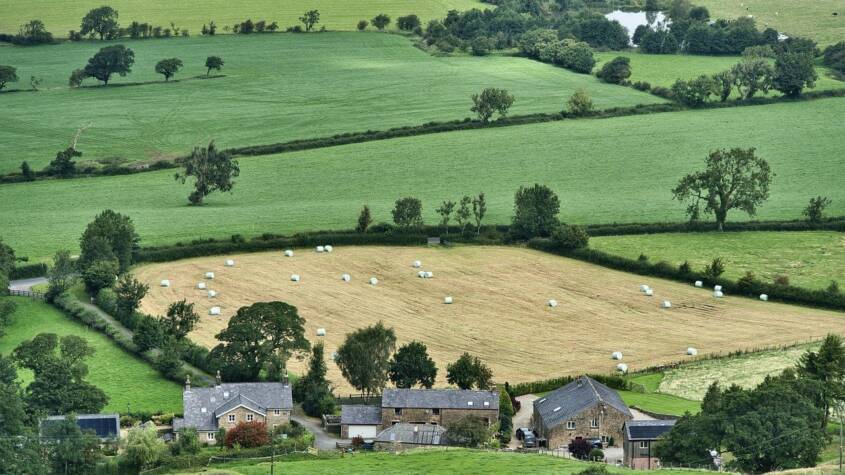
Ontario is a province rich in agricultural diversity, boasting a variety of farms that contribute significantly to both the local economy and the food supply. The region is home to over 49,600 farms, producing a wide array of crops and livestock, making it a cornerstone of Canada’s agriculture. From dairy and poultry farms to fruit orchards and vineyards, Ontario’s agricultural landscape is as varied as its geography.
Many farms in Ontario embrace innovative practices, focusing on sustainability and technology to enhance productivity. The push towards organic farming and local supply chains reflects a growing awareness of environmental issues and consumer preferences. This evolution is evident in the ways farms operate, ensuring they can meet market demands while fostering a connection with their communities.
Exploring Ontario’s farms provides insight into the province’s culture and economy. Each farm tells a unique story, reflecting the hard work and dedication of those who manage them. The region’s agricultural activities not only sustain livelihoods but also preserve rural traditions and contribute to the culinary diversity that defines Ontario.
Agriculture in Ontario
Agriculture plays a crucial role in Ontario’s economy. Various climatic regions and diverse soil types significantly impact farming practices across the province. The mix of crops and livestock varies depending on these factors.
Climatic Regions and Soil Types
Ontario features several climatic regions, including the humid continental climate in the south and a more temperate climate in the north. These varying climates allow for diverse agricultural practices.
Soil types, such as clay, sandy, and loamy soils, are prevalent. The Niagara Peninsula, known for its rich soils, supports the cultivation of fruits like grapes. Other areas, like the Corn Belt, flourish with crops like corn and soybeans due to fertile, well-drained soils.
Commonly Grown Crops
Ontario’s agricultural landscape includes a wide variety of crops. Some of the primary crops produced are:
- Corn: Widely grown for animal feed and ethanol production.
- Soybeans: A major export crop, vital for oil and livestock feed.
- Wheat: Both spring and winter varieties are cultivated, serving multiple markets.
- Fruits and Vegetables: The Greenbelt Area supports apples, tomatoes, and bell peppers.
Farmers often employ crop rotation practices to maintain soil health and optimize yields.
Livestock Rearing Practices
Livestock rearing is an integral part of Ontario’s agriculture. The province is known for poultry, dairy, and beef production. Significant practices include:
- Dairy Farming: Focused primarily in areas like York Region and Perth County, dairy farms utilize advanced technology for milking procedures and herd health management.
- Poultry Production: Chicken and turkey farming make substantial contributions to local economies.
- Beef Cattle: Grazing operations occur predominantly in the northern and central regions, taking advantage of natural pastures.
Animal welfare standards are emphasized in practices, ensuring sustainable livestock management.
Farm Management and Operations
Effective management and operations are crucial for the success of farms in Ontario. By implementing sustainable practices, embracing new technologies, and understanding economic trends, farmers can enhance productivity and ensure long-term viability.
Sustainable Farming Techniques
Sustainable farming techniques focus on long-term environmental health while maximizing yield. These methods include crop rotation, cover cropping, and integrated pest management. Crop rotation helps maintain soil fertility and reduce disease susceptibility. Cover cropping prevents soil erosion and improves nutrient content.
Farmers also utilize organic fertilizers and compost to minimize chemical use, which benefits both the environment and consumer health. Additionally, many Ontario farms are adopting regenerative practices, such as reduced tillage, which improves soil structure and moisture retention.
To support biodiversity, some farms implement agroforestry, integrating trees and shrubs into agricultural systems. This diversification not only enhances the ecosystem but also provides additional income through non-timber forest products.
Technology and Innovation in Agriculture
Technology plays an essential role in modern farm management. Precision agriculture, which uses GPS and data analytics, allows farmers to optimize inputs like water, fertilizers, and pesticides. This approach increases efficiency and reduces waste.
Drones are also becoming a common tool for monitoring crop health and assessing field conditions. They provide real-time data, which is valuable for timely decision-making. Furthermore, automation in planting and harvesting reduces labor costs and increases precision.
Farm management software offers farmers tools for tracking expenses, crop performance, and labor management. These innovations aid in improving overall productivity and sustainability in farming operations.
Economic Impact and Market Trends
The economic landscape for Ontario farms is influenced by various factors, including market demand, trade policies, and global climate conditions. In recent years, there’s been a shift towards locally sourced and organic products, impacting the farming economy.
Farmers are adapting their operations to meet changing consumer preferences, which include an emphasis on transparency and sustainability. Research indicates that organic produce commands higher market prices, encouraging some farmers to transition to organic farming.
Moreover, fluctuations in global commodity prices affect farmers’ profitability. Interest rates and investment in agricultural infrastructure also play critical roles in shaping the economic outlook. Understanding these trends helps farmers make informed decisions about crop selection and resource allocation.
Sympathy Flowers: Meaningful Gestures for Comfort and Support
Sympathy flowers serve as a heartfelt gesture during times of loss and grief. They provide…









